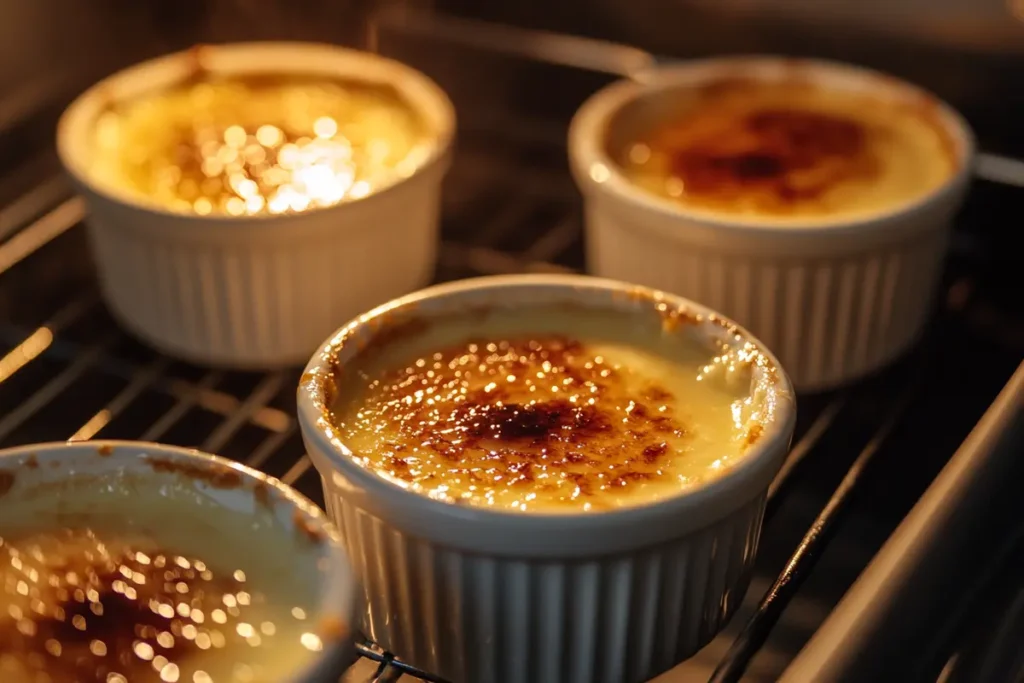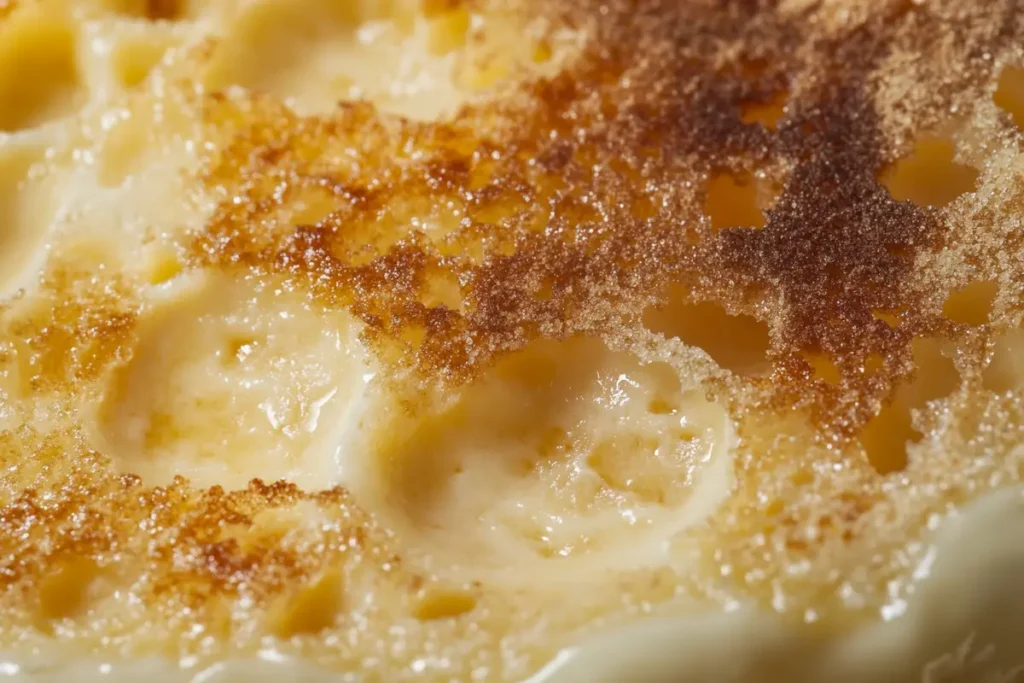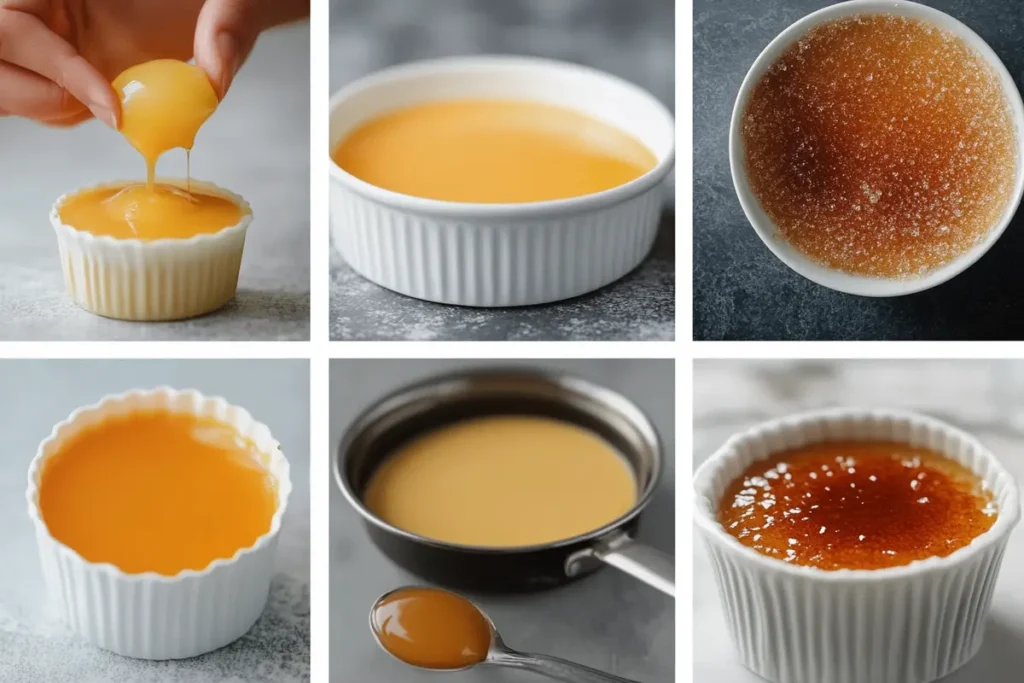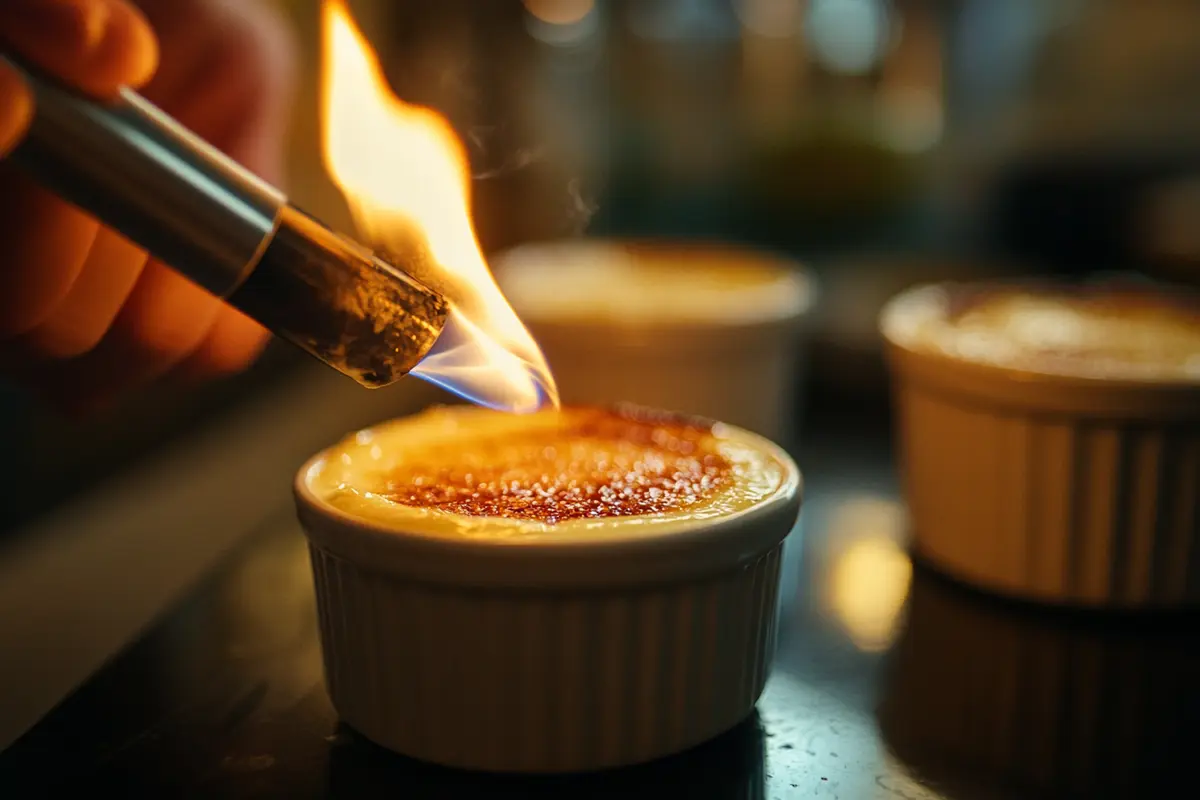Table of Contents
What is the secret to crème brûlée? It’s more than just a dessert; it’s a culinary experience. The creamy custard, the crackling sugar crust—it’s a delightful symphony of textures and flavors. Achieving the perfect crème brûlée requires understanding the delicate balance of ingredients and techniques. Let’s unlock the secrets to making this classic dessert a masterpiece in your own kitchen.
Understanding the Essential Components
Crème brûlée translates to “burnt cream” in French. It is a rich custard base topped with a hardened caramelized sugar crust. The custard typically consists of heavy cream, egg yolks, sugar, and vanilla extract. The quality of each ingredient greatly impacts the final outcome. Therefore, using fresh, high-quality ingredients is key.
The Importance of Heavy Cream
Heavy cream is the foundation of a great crème brûlée. Its high fat content contributes to the velvety smooth texture that defines this dessert. Avoid substituting with lighter creams or milk as this will compromise the richness and mouthfeel. Opt for a cream with at least 36% fat content for the best results.
The Role of Egg Yolks
Egg yolks provide the custard with its characteristic thickness and richness. They act as a natural emulsifier, binding the cream and sugar together. Using only yolks, and not the whole egg, ensures a smooth, luxurious texture, free from any unwanted “eggy” flavor. Fresh egg yolks are preferred for optimal flavor and binding properties.
The Sweetness Factor: Sugar
Granulated sugar is the most common choice for crème brûlée. It provides sweetness and contributes to the overall structure of the custard. The amount of sugar needs to be precisely measured. Too little and the custard will be bland; too much and it will be overly sweet and may not set properly.
Vanilla: The Aromatic Touch
Vanilla extract or vanilla bean adds a delicate aroma and flavor to the custard. Using a high-quality vanilla extract is highly recommended. Alternatively, scraping the seeds from a vanilla bean directly into the cream infuses the custard with a deeper, more complex vanilla flavor.

Mastering the Preparation Technique
The preparation of crème brûlée involves a few crucial steps. These steps ensure the custard is perfectly smooth and cooked evenly. Paying attention to detail at each stage is essential for achieving the desired outcome.
Infusing the Cream
The first step is typically to infuse the heavy cream with vanilla. Gently heat the cream with a vanilla bean (if using) in a saucepan over low heat. Avoid boiling the cream; you only want to warm it enough to release the vanilla flavor. This gentle infusion is crucial.
Combining the Ingredients
Whisk together the egg yolks and sugar in a separate bowl until pale and slightly thickened. This step incorporates air into the mixture. This helps create a light and airy custard. Gradually pour the warm cream into the egg yolk mixture. Whisk constantly to prevent the eggs from cooking.
Straining the Mixture
Straining the custard mixture through a fine-mesh sieve is a critical step for achieving a smooth texture. This removes any lumps or bits of cooked egg that may have formed during the mixing process. Straining ensures a perfectly silky custard.
Baking in a Water Bath
Crème brûlée is typically baked in a water bath, also known as a bain-marie. This method provides gentle, even heat. This prevents the custard from curdling or developing a rubbery texture. The water bath helps maintain a consistent temperature throughout the baking process.

Achieving the Perfect Texture
The texture of crème brûlée should be smooth, creamy, and velvety. Overbaking can result in a grainy or curdled texture. Underbaking can lead to a runny custard. Knowing how to achieve the perfect texture requires attention to detail during the baking process.
Determining Doneness
The custard is done when the edges are set but the center still jiggles slightly. A slight wobble in the center indicates that the custard will continue to set as it cools. Overbaking will result in a dry, crumbly texture, which is undesirable.
Cooling and Resting
Allow the baked custards to cool completely at room temperature before refrigerating them for at least two hours, or preferably overnight. This chilling period allows the flavors to meld together. It also allows the custard to fully set, resulting in a firmer texture.
Creating the Signature Crust
The caramelized sugar crust is what distinguishes crème brûlée from other custards. Achieving a perfectly crisp, brittle crust requires using a kitchen torch or a broiler. Even distribution of heat is crucial for creating an even, golden-brown crust.
The Sugar Selection
Granulated sugar is the most commonly used sugar for the crust. It caramelizes easily and creates a brittle, glassy texture. A thin, even layer of sugar is essential for achieving the desired result. Too much sugar can result in a thick, hard crust.
The Torch Technique
Using a kitchen torch, gently melt the sugar, moving the flame in a circular motion. Avoid holding the torch in one spot for too long, as this can burn the sugar. The goal is to create a uniform, golden-brown crust. It should be evenly caramelized, without any burnt spots.
Broiling as an Alternative
If you don’t have a kitchen torch, you can use the broiler in your oven. Place the ramekins of custard on a baking sheet and broil them until the sugar is caramelized. Watch them closely to prevent burning. Broiling requires careful monitoring to avoid overheating.
Troubleshooting Common Crème Brûlée Problems
Even with careful attention to detail, problems can arise. Understanding common issues and how to address them can help you achieve perfect crème brûlée every time.
Runny Custard
A runny custard is often the result of underbaking or not using enough egg yolks. Ensure the custard is baked until the edges are set but the center still jiggles slightly. Using the correct ratio of egg yolks to cream is also essential.
Curdled Custard
Curdling can occur if the custard is baked at too high of a temperature or if the cream is overheated. Baking the custard in a water bath helps regulate the temperature and prevent curdling. Gently warming the cream, not boiling it, can help avoid curdling.
Burnt Sugar
Burnt sugar is typically caused by using too much heat or holding the torch in one spot for too long. Use a low flame on the torch and move it in a circular motion to caramelize the sugar evenly. If using a broiler, watch the custard closely to prevent burning.
Grainy Texture
A grainy texture can result from overbaking or not straining the custard mixture. Baking the custard in a water bath helps prevent overbaking. Straining the mixture through a fine-mesh sieve removes any lumps or bits of cooked egg, ensuring a smooth texture.

Adding Creative Twists
While classic crème brûlée is delicious on its own, you can add creative twists to customize the flavor and presentation. Experimenting with different flavors and toppings can elevate this dessert to new heights.
Infusing with Different Flavors
Consider infusing the cream with different flavors, such as coffee, lavender, or citrus zest. Adding a splash of liqueur, such as Grand Marnier or Amaretto, can also enhance the flavor. Be careful not to overpower the delicate custard.
Adding Toppings
Fresh berries, chocolate shavings, or a sprinkle of sea salt can add a delightful finishing touch to crème brûlée. These toppings complement the creamy custard and brittle sugar crust, creating a more complex flavor profile.
Unique Sugar Crusts
Experiment with different types of sugar for the crust, such as brown sugar or turbinado sugar. These sugars add a slightly different flavor and texture to the caramelized crust. You can also add spices, such as cinnamon or cardamom, to the sugar for an extra layer of flavor.
What is the secret to crème brûlée? It lies in the precision of ingredients and technique. Understanding the role of each component, mastering the preparation process, and troubleshooting common problems will set you on the path to crème brûlée perfection. Now, go forth and create this exquisite dessert!
FAQ
What is the secret to crème brûlée?
The secret lies in using high-quality ingredients, especially heavy cream and fresh egg yolks. Precise baking in a water bath and careful caramelization of the sugar topping are also crucial.
For More Delicious Recipes :
Dubai Chocolate Bar Recipe: A Decadent Taste of the Middle East
Cinnamon Toast Crunch Cookies Recipe: Your Next Favorite Treat

